The Condition of a 1929 Wedding Dress
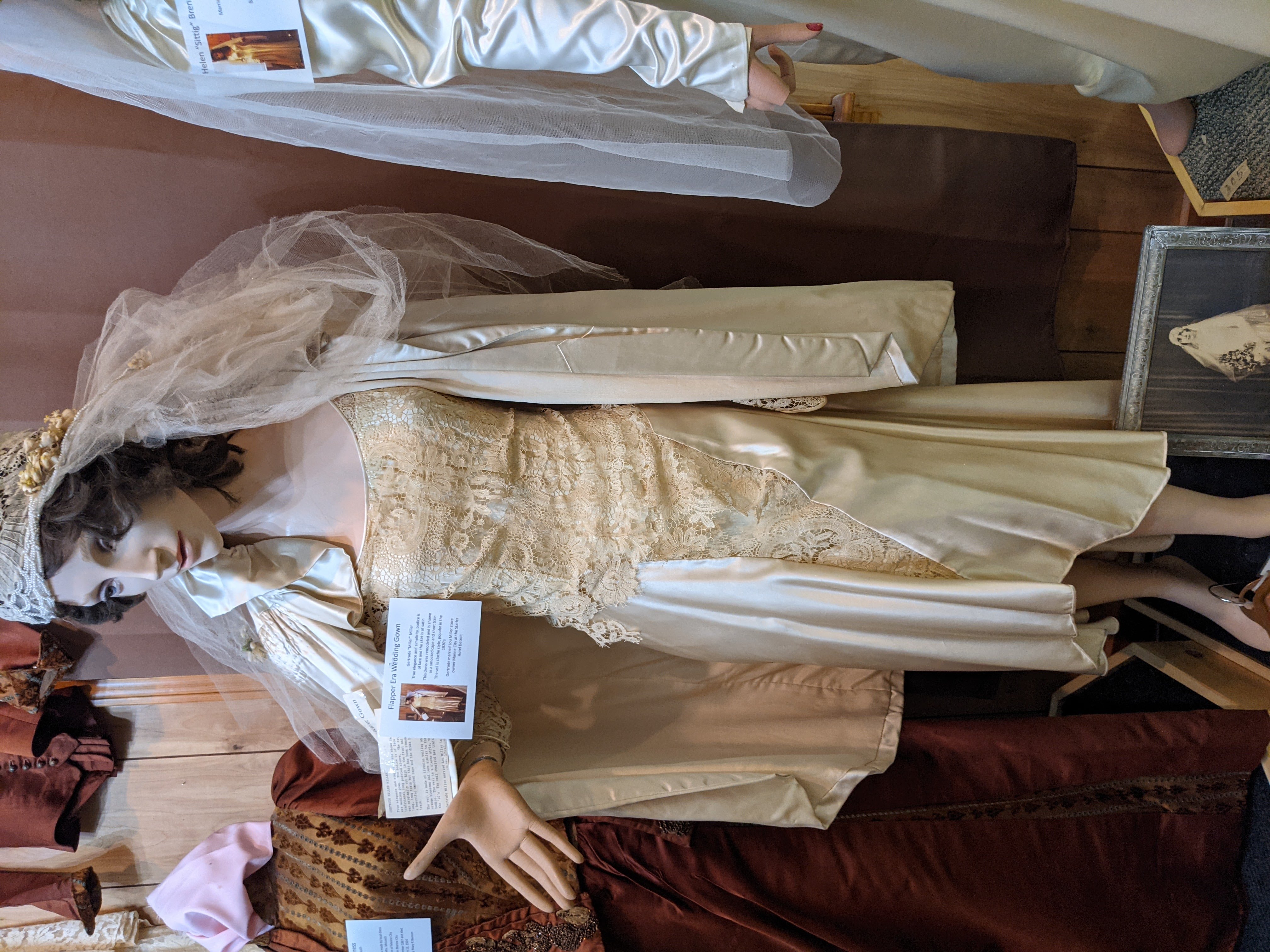
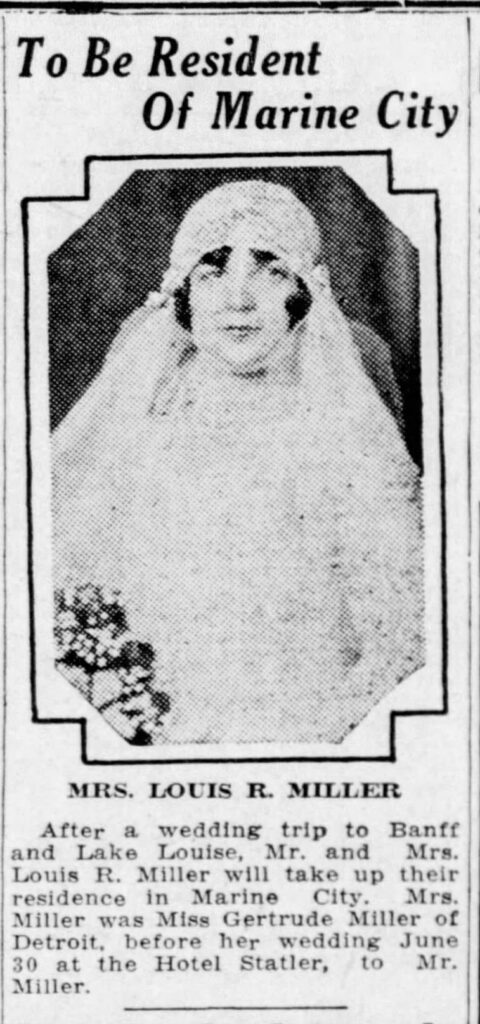
Gertrude Miller (1909-2005) of Detroit Michigan, married Louis Miller (1899-1990) at the Statler Hotel in Detroit on June 30th, 1929. Lou was a store owner in Marine City. They honeymooned in Banff and Lake Louise in Alberta Canada. Banff is a beautiful city at the foot of a mountain range.
The dress has seen better days. Originally it was floor length with a train. It was shortened and used to make the smocked cape seen on the mannequin. The veil incorporates a cloche style which was popular in the 1920s.
It was donated to the museum by a family member and has been on display ever since. Being on display for long periods of time is hard on even the heartiest of fabrics, it’s no surprise that this lace dress has been damaged especially holding up a heavy satin skirt.
The Condition of the Dress
Unfortunately, the lace was torn when the mannequin was moved during some work that was being done at the museum. To keep it on the mannequin the dress was safety-pinned to the lining fabric. Honestly, this was an accident waiting to happen, and would likely have happened eventually even if it hadn’t been moved.
It made my heart hurt to see the dress safety-pinned back up. But what’s done is done and the only thing to do now is to stabilize the tear and prevent more damage.
First things first, I documented the damage while on the Mannequin.

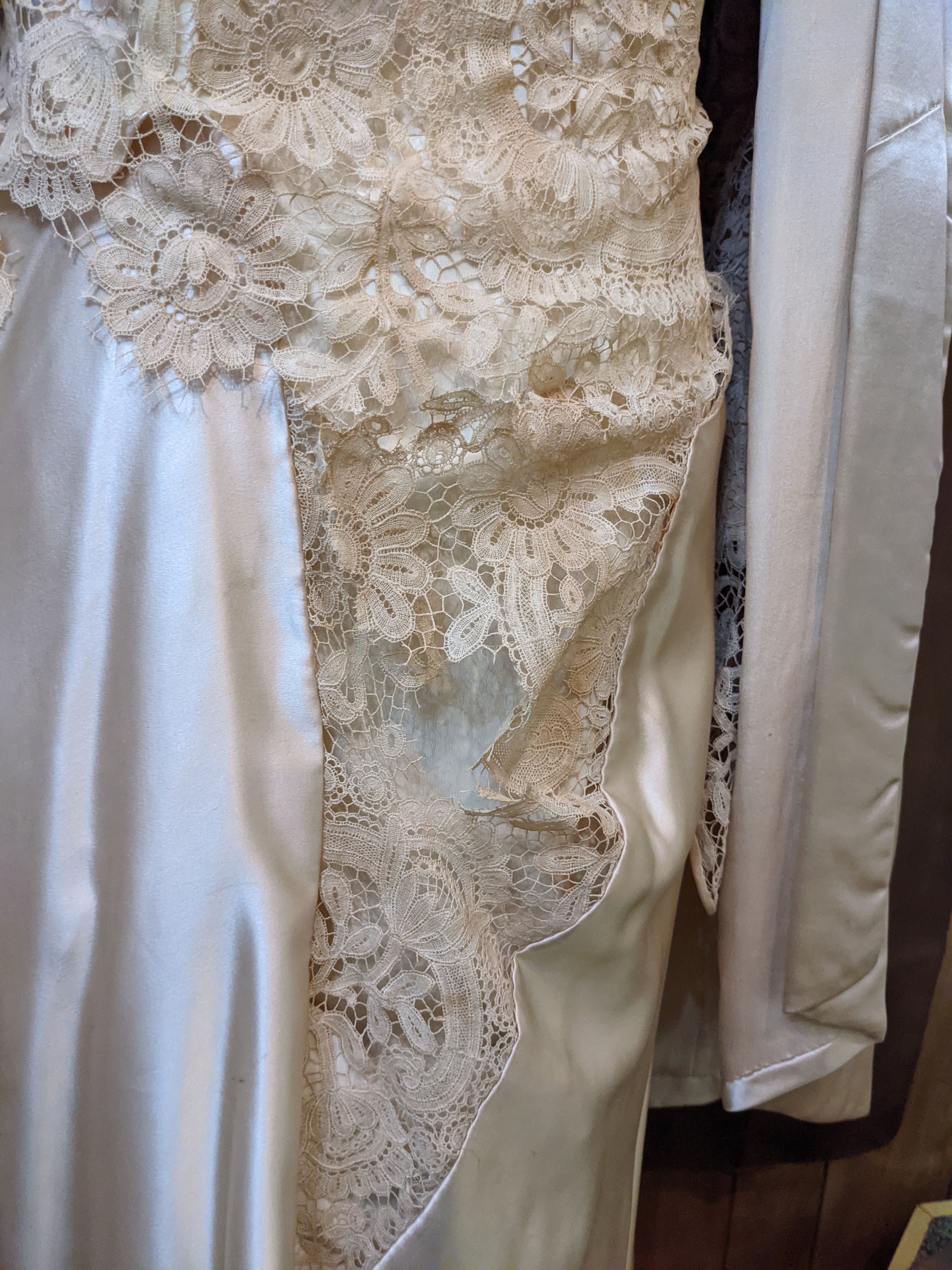
The next step was to take off the veil, wig, and cape. The tag on the cape was the first thing to take off. it had been attached to the cape with a plastic tag. This had slightly damaged the satin, but hopefully that will become less apparent over time. Once the cape was off, I realized the damage was much worse than I expected. So I took more pictures.
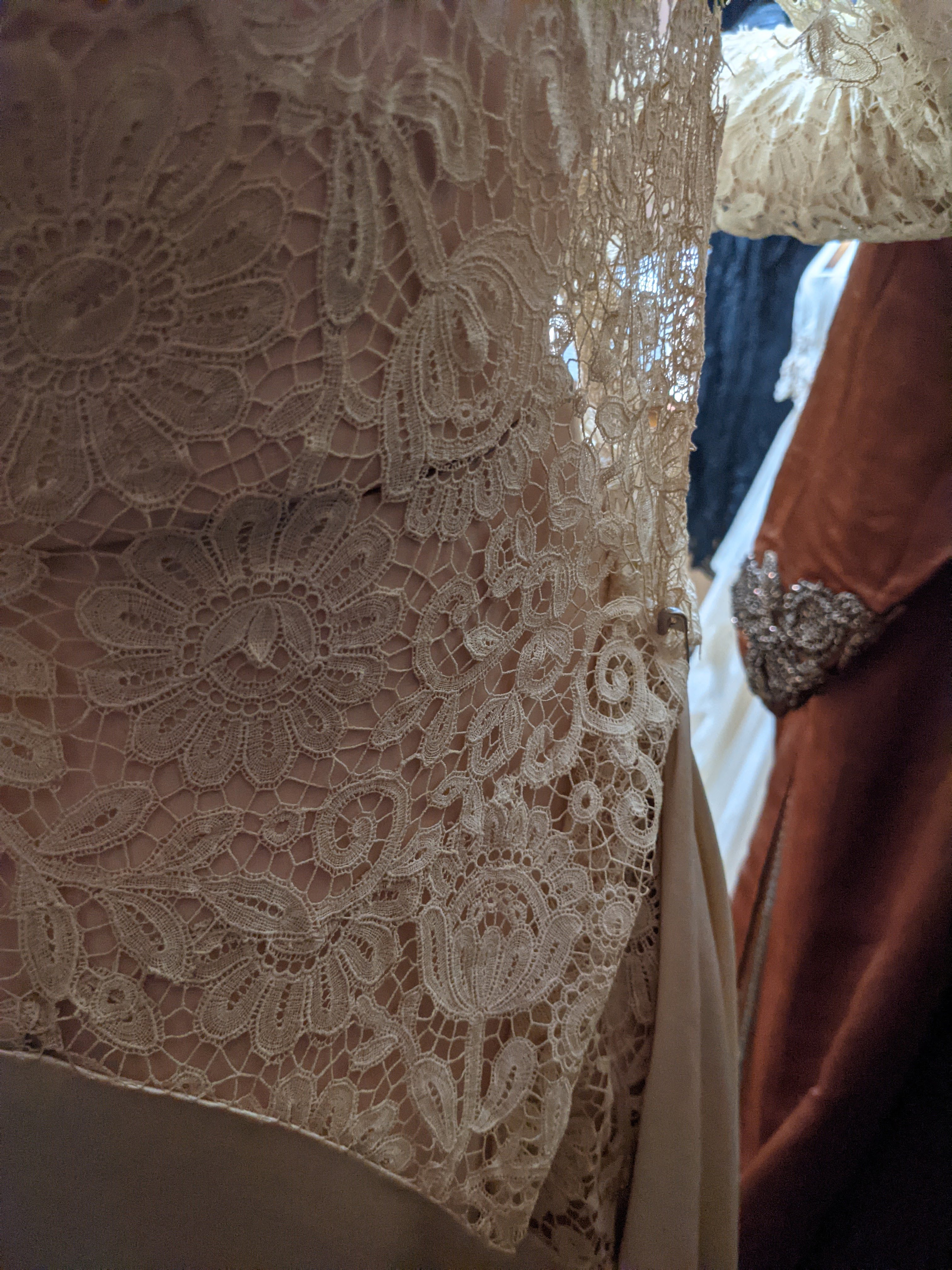

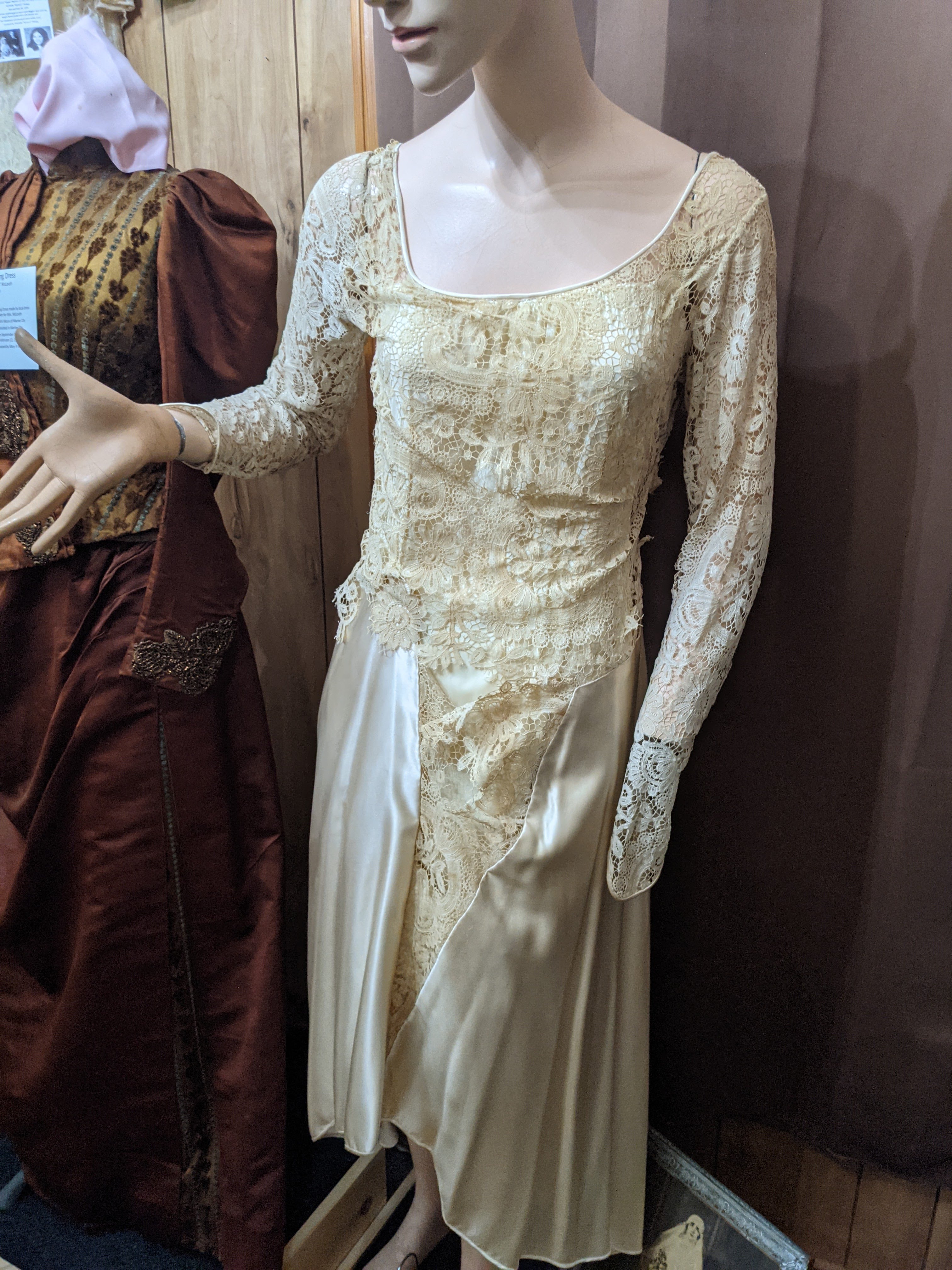
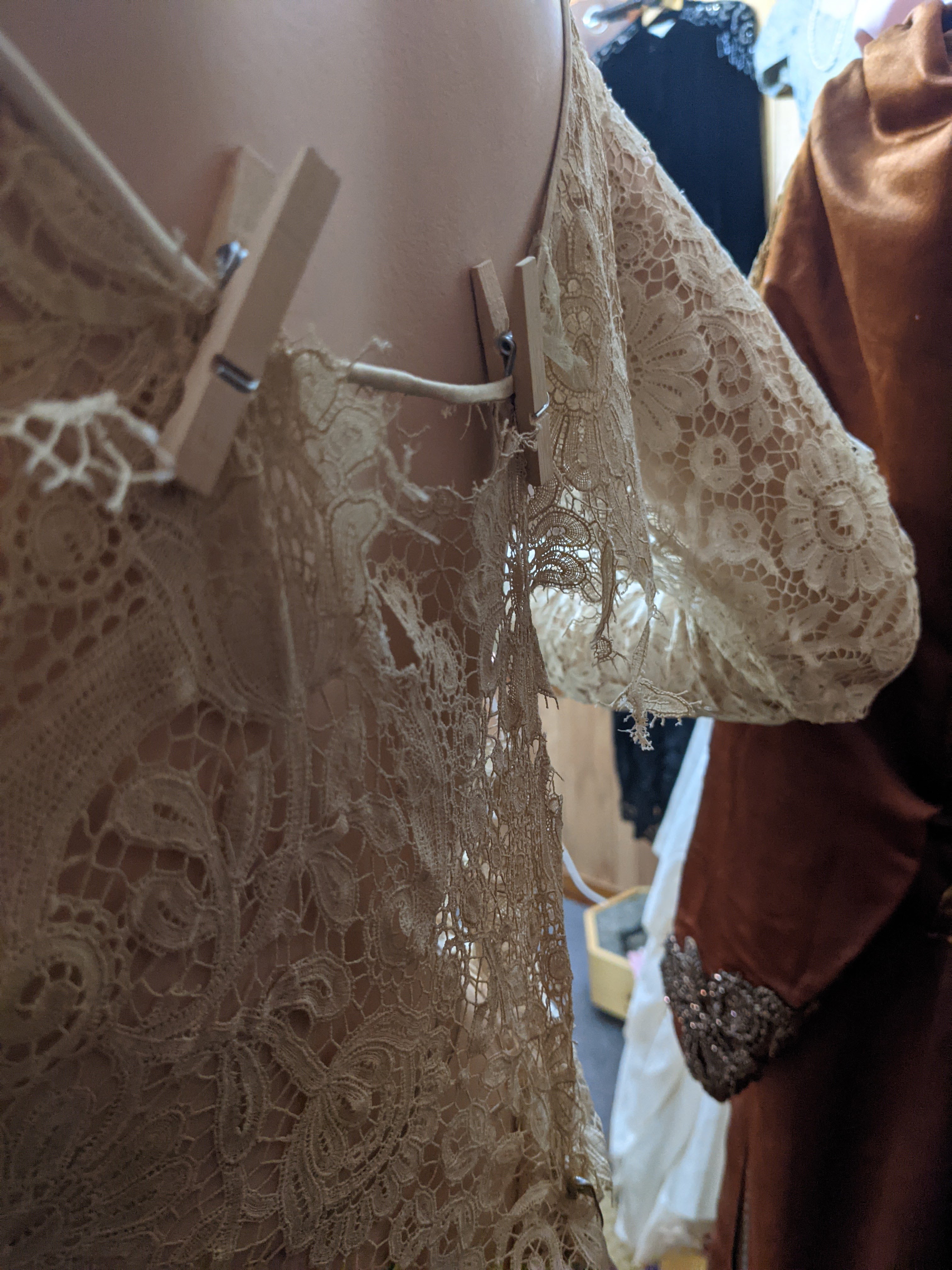
The tear extended all the way around the dress, there were clothespins holding up the back and I found that it was in two pieces. The lining that was sewn into the dress was not original to the 1929 dress, it was a floor-length slip that was sewn to the neckline and cut to shape and added much later, possibly when the dress was altered.
Taking it off the Manniquin
I asked for help from another museum volunteer to help me out with this part. This was the first time I’d taken apart a storefront-style mannequin, but it only took a few seconds to figure it out. The hardest part was getting the sleeve off the bent arm without tearing the lace further.
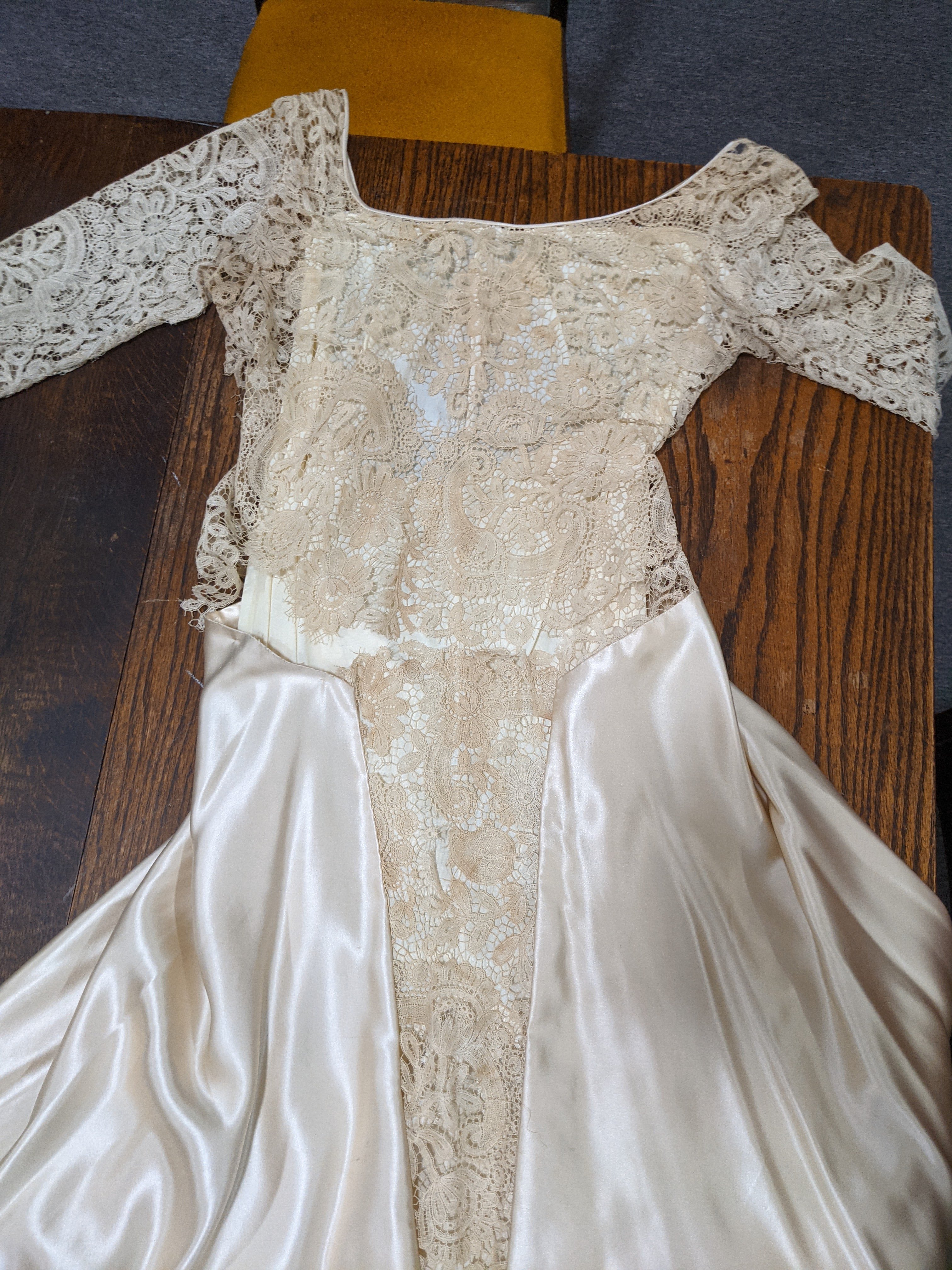
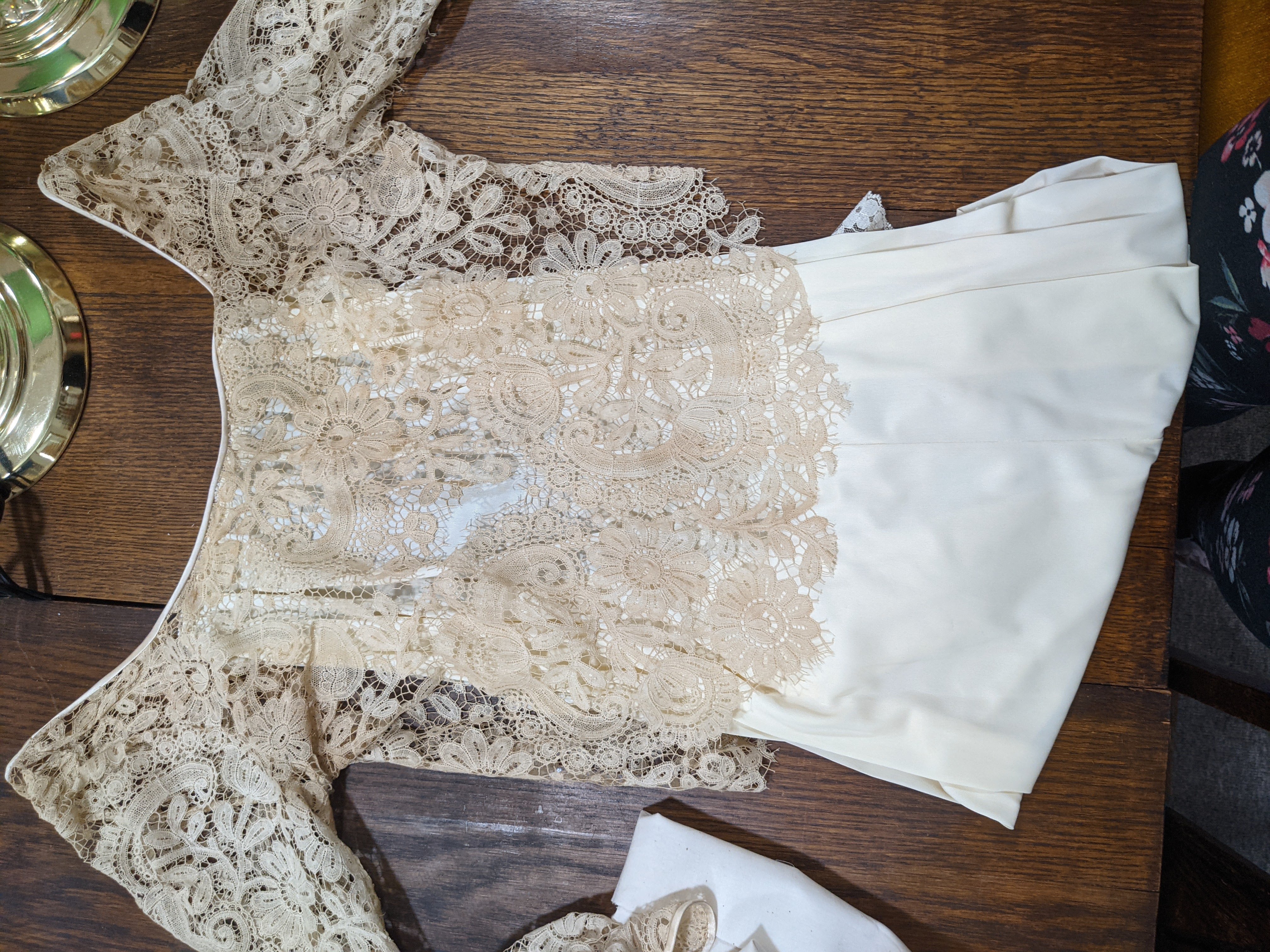
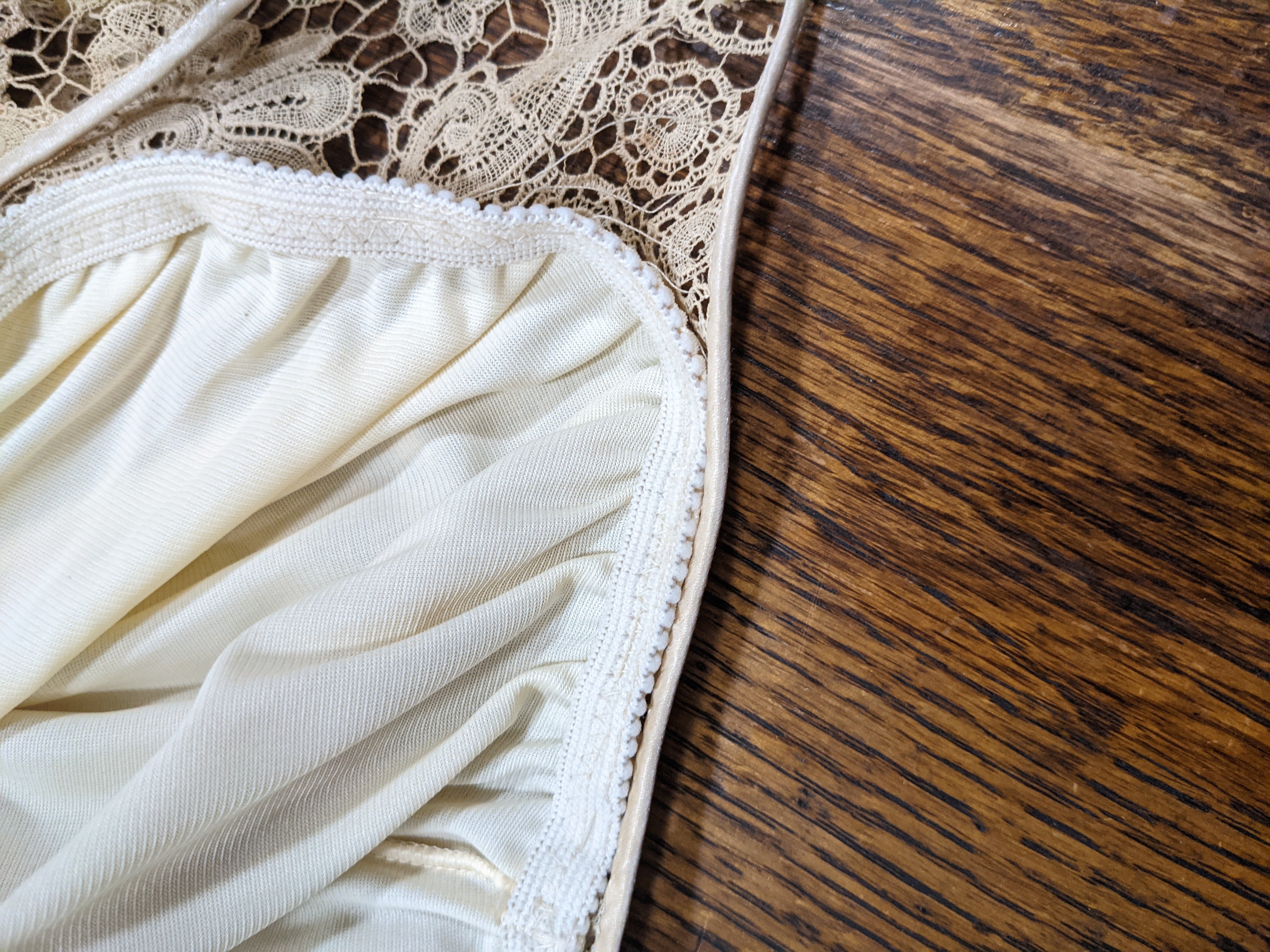
Once off the mannequin I transferred the dress to the table in the reading room and began accessing how to begin restoring the dress. The lining that was sewn into the dress was not original to the 1929 dress, it was a floor-length slip that was sewn to the neckline and cut to shape and added much later, possibly when the dress was altered. This threw out my original plan of sewing the lace to the lining. So I needed to come up with another solution. Which I will talk about in another post.